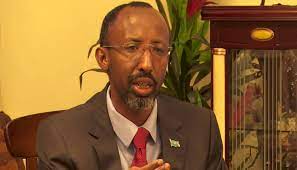Somalia wants to hire 3000 extra teachers

On Monday, in Mogadishu, the Somali government launched a hiring process of 3000 teachers, which is expected to expand Somalia’s education capacity. Somalia education minister Farah Sheikh Abdulkadir opened the launch ceremony, which was held in Mogadishu.
The Somali ministry of education engaged all the stakeholders, including members of the parliament and regional administrators, to consult the process of hiring the new teachers to make it transparent and open to the public, said the minister of education, Farah Sheikh.
The new teachers will work in all Somali regions and distribute in the states, including Banadir.
At the event, the minister said, “Education is a key solution to every Somali social problem; we can eradicate poverty, silence the gun, and enhance society through social education.”
“The government expects to recruit 100 thousand teachers, but this is testimony” in his talk.
The ministry hires a committee, and the candidate can apply the process through an online portal that is open to the public.
Somali president Hassan Sheikh stated that his government put education development on the first priority list. While talking to the Somali community in Minnesota, the president said, “the plan of the education ministry is to hire 10 thousand public teachers, to educate low-income society, our target is to educate children from low-income families in Somalia.”
The Somali government started a total war against Al-Shabab and liberated a massive area in Galmudug and Hirshabelle. However, the education infrastructure of the newly seized towns is under measurement and requires swift development.
As the minister mentioned, the teachers’ exam will take place in two regional states, and the new teachers will take 6-month Extensive training – in teaching methodology and discipline. Female candidates have special consideration.
In The World Education index, Somalia is one of the lowest. According to UN agencies, the effect of multiple levels of crisis in Somalia’s education delivery contributed to one of the lowest school enrolment rates in the world, with only 42% of primary school-age children in school.